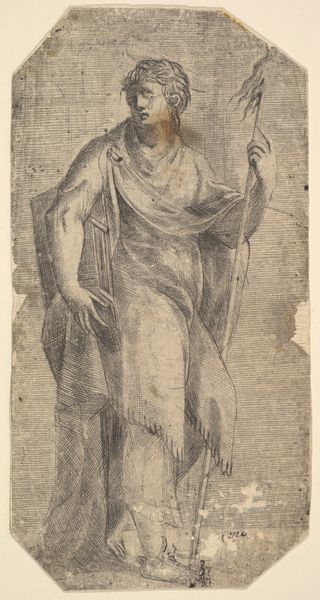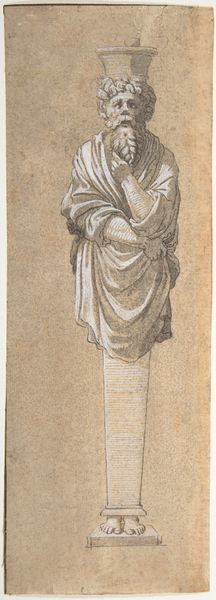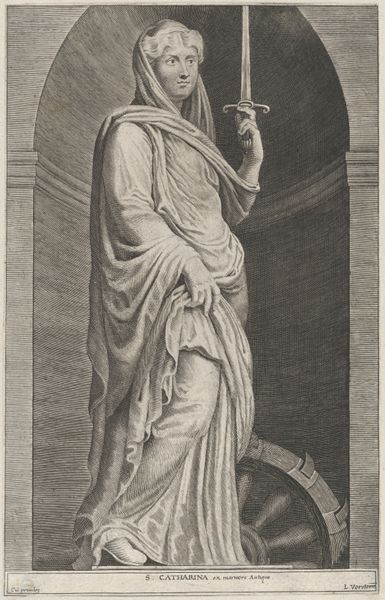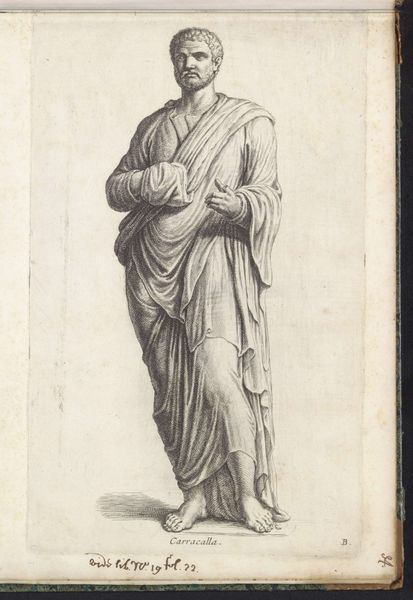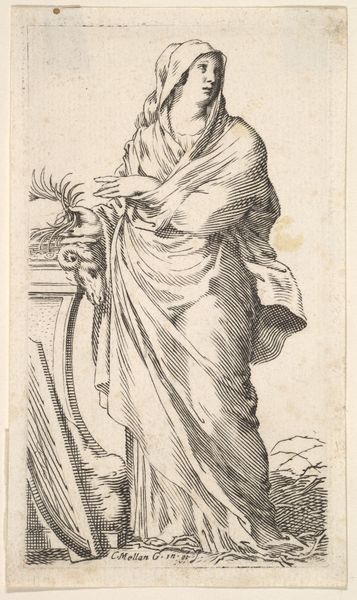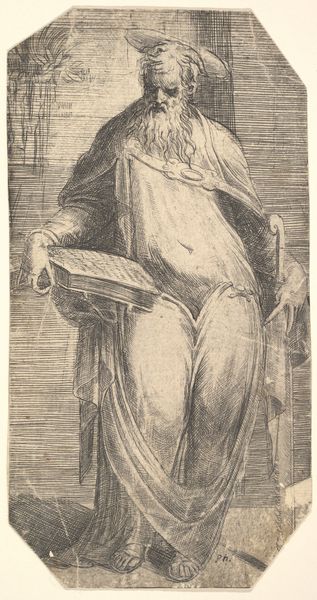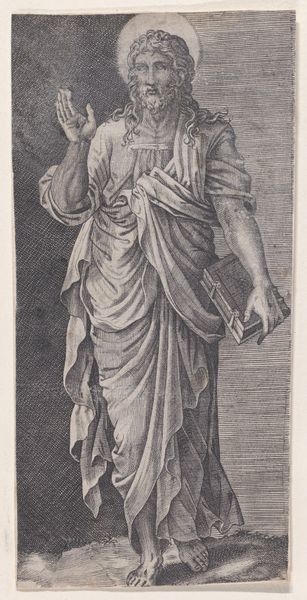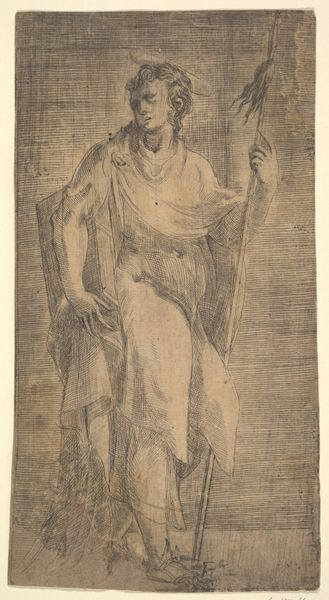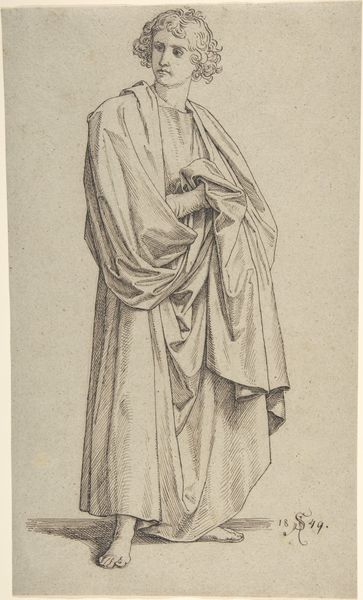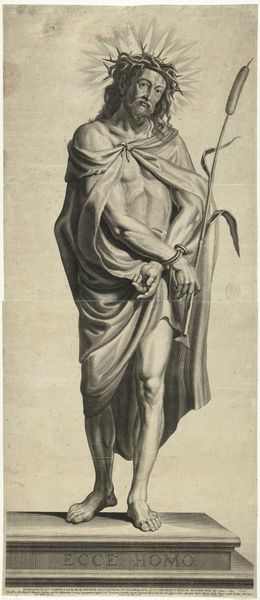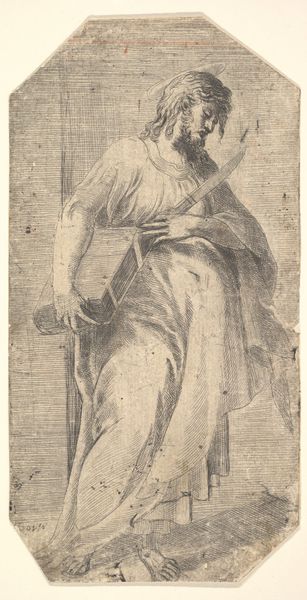
drawing, print, engraving
#
portrait
#
drawing
# print
#
figuration
#
italian-renaissance
#
engraving
Dimensions: Sheet (trimmed): 10 3/16 × 4 1/16 in. (25.9 × 10.3 cm)
Copyright: Public Domain
Curator: Here we have Antonio Fantuzzi's "Woman Looking over Her Shoulder," an engraving from around 1540-1545, presently housed at the Metropolitan Museum of Art. Editor: My immediate impression is of quiet unease. There's a classical solidity in the figure, but that averted gaze suggests some deeper tension. What story does she carry within her gesture? Curator: I think that tension reflects the broader societal context of the time. The female figure, particularly in Italian Renaissance art, was so often idealized or allegorical. Here, there is an undeniable sensuality in the drapery, yet also a defiance. The act of looking back itself becomes a powerful symbol of resistance against the male gaze that would usually define her. Editor: Absolutely, I see that too. Looking closer, there are clear iconographic lineages that point to classical statuary and depictions of Venus Pudica, but reinterpreted with a distinct unease. Her glance backward, combined with how she covers herself—partially, selectively—hints at vulnerability. She embodies a loaded symbol here: chastity versus temptation. Curator: Yes, and I see it as indicative of the complex negotiations women had to make in Renaissance society. Fantuzzi places his figure right on the knife's edge, not easily reduced to pure innocence or outright licentiousness. The bare breast and elegantly draped clothing show she takes control of her own representation, and in turn perhaps the circumstances surrounding her at that time. Editor: I am also intrigued by the formal execution itself. Notice the intricate cross-hatching, that masterful engraving technique creates volume and texture, but it's also adding to this sense of unrest, that almost scratchy rendering that seems to fight against a complete sense of composure. It is like we the viewers are invading on her private moments of consideration. Curator: Agreed, and it feels radical. Looking closely at that engraved surface opens dialogues on labor, gendered access, and authorship of such a fraught, resonant piece. Editor: It really does offer layers of engagement, between classical idealism and deeply embedded personal anxiety. Curator: Indeed, this print invites us to reconsider not only the subject's individual story, but the broader narrative of women within art and society at this particular point in history.
Comments
No comments
Be the first to comment and join the conversation on the ultimate creative platform.
